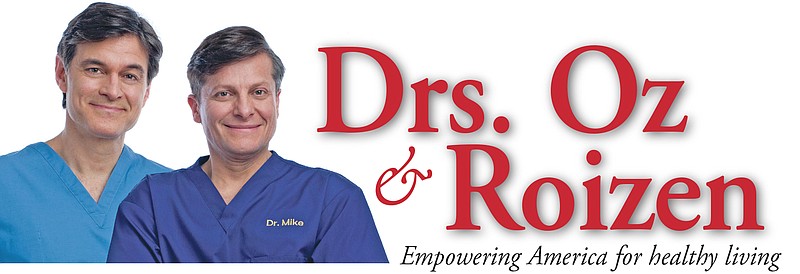Q: I've been afraid to take my now 6-year-old to the doctor for the past year. Recently, the office started pressuring me to bring her in for vaccinations (not COVID-19). Can't I put it off? - Jenny P., Mobile, Alabama
A: Even before the pandemic, Americans were undervaccinating their infants and children. In 2018, only 72.8% of 19- to 35-month-olds had received all of the seven recommended vaccines, according to a new study in Health Equity. We're aiming for over 90%. As for safety - the vaccines themselves are 35,000 times more beneficial than they are risky! Your 6-year-old should have already gotten the hepatitis B, rotavirus, DTaP (diphtheria, tetanus, pertussis), pneumococcal, polio, MMR (measles, mumps, rubella), chickenpox (varicella) and hepatitis A vaccines. They're given between birth and 6 years of age; you can see the schedule at www.cdc.gov/vaccines.
Vaccinations have transformed childhood, spared parents enormous grief and protected millions of adults from disease. A German measles epidemic in 1964 sickened 12.5 million Americans; killed 2,000 babies; and caused 11,000 miscarriages. The vaccine came into use in 1969; there've been 15 cases in the past nine years. In 1952, nearly 60,000 children contracted polio; thousands were paralyzed, and more than 3,000 died. The first polio vaccine was available in 1955; the country has been polio-free since 1979.
And as for the safety of the doctor's office or clinic, banish any worries about going there by asking them the following four questions. Yes is the answer you want for each one. Are staff and visitors required to wear masks? Are they adhering to cleaning protocols and sanitizing measures for exam rooms, waiting areas, restrooms, elevators and other frequently touched surfaces? Do they enforce social distancing in the waiting rooms? Do they limit the number of people who can be in the office or clinic at the same time? Then you can make the appointment and protect your child and your community.
Q: I don't like eating a lot of heavy food at lunchtime; it makes working in the afternoon more difficult. Having a nice, big dinner is so relaxing. Why do you keep advising against it? - Bob H., Pine Plains, New York
A: My recent book, "What to Eat When," lays out the scientific evidence that shows that it is healthier to get most of your calories at breakfast and lunch (around 80%) and then go light at dinner. In a nutshell: It takes advantage of your body clock's built-in timing for burning fat (during daylight), managing inflammation (ditto), processing carbs and keeping blood sugar levels under control (ditto). It also allows your body to repair your cells, and you don't want to block that with late-in-the-day overeating - all that digesting interferes with the nighttime cleaning crew's job. Recently, a study has confirmed just how risky eating late is. Researchers from the University of Alabama did a lab study and found that animals eating foods that contain what are called long-branched amino acids (such as leucine, isoleucine and valine) late in the day saw a 75% increase in the size of cells that control a heartbeat, and there was a speed up in the progression of heart disease. Those amino acids are beefed up in meats, dairy and egg yolks. The study in the Journal of Molecular and Cellular Cardiology also found that eating long-branched amino acids before activity doesn't do that to the heart muscle; in fact, they stimulate protein-building in muscles and may help prevent muscle breakdown. Timing is truly everything! Our advice: Get your branched-chain amino acids early and from beans, canned tuna, salmon, turkey breast and 1% milk. Time your meals so you're eating unprocessed carbs and healthy fats early in the day, too, when your body is most sensitive to insulin. Then it can control your blood sugar and appetite most effectively. You'll avoid weight gain and heart woes.

